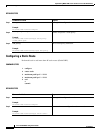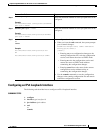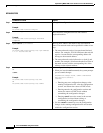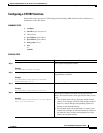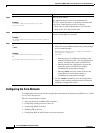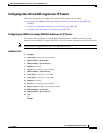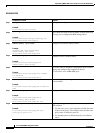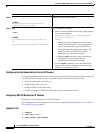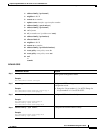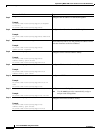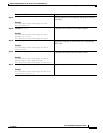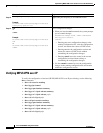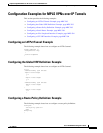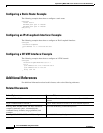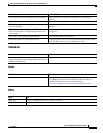
Implementing MPLS VPNs over IP Tunnels on Cisco IOS XR Software
How to Configure MPLS VPNs over IP Tunnels
MPC-288
Cisco IOS XR MPLS Configuration Guide
OL-12284-01
Configuring the Backbone Carrier Core for IP Tunnels
Configuring the backbone carrier core requires setting up connectivity and routing functions for the CSC
core and the CSC-PE routers. To do so, you must complete the following high-level tasks:
• Verify IP connectivity in the CSC core.
• Configure IP tunnels in the core.
• Configure VRFs for CSC-PE routers.
• Configure multiprotocol BGP for VPN connectivity in the backbone carrier.
Configuring CSC-PE Routers for IP Tunnels
Perform this task to configure a CSC-PE for IP tunnels.
For information on how to configure CSC-CE routers, see the Implementing MPLS Layer 3 VPNs on
Cisco IOS XR Software module.
SUMMARY STEPS
1. configure
2. router bgp as-number
3. address-family {vpnv4 unicast}
Step 14
address-family {vpnv4 unicast}
Example:
RP/0/0/CPU0:router(config-bgp-nbr-af)#
address-family vpnv4 unicast
Configures VPNv4 address family.
Step 15
end
or
commit
Example:
RP/0/0/CPU0:router(config-bgp-nbr-af)# end
or
RP/0/0/CPU0:router(config-bgp-nbr-af)# commit
Saves configuration changes.
• When you issue the end command, the system prompts
you to commit changes:
Uncommitted changes found, commit them before
exiting(yes/no/cancel)?
[cancel]:
–
Entering yes saves configuration changes to the
running configuration file, exits the configuration
session, and returns the router to EXEC mode.
–
Entering no exits the configuration session and
returns the router to EXEC mode without
committing the configuration changes.
–
Entering cancel leaves the router in the current
configuration session without exiting or
committing the configuration changes.
• Use the commit command to save the configuration
changes to the running configuration file and remain
within the configuration session.
Command or Action Purpose



